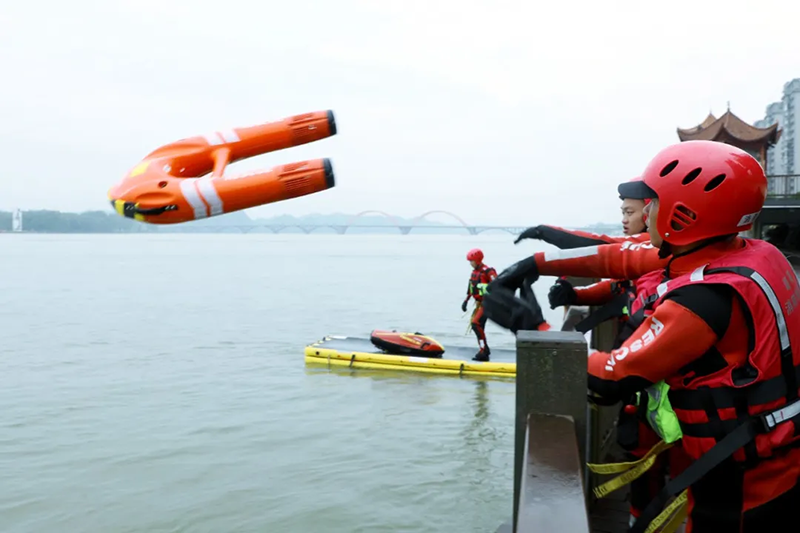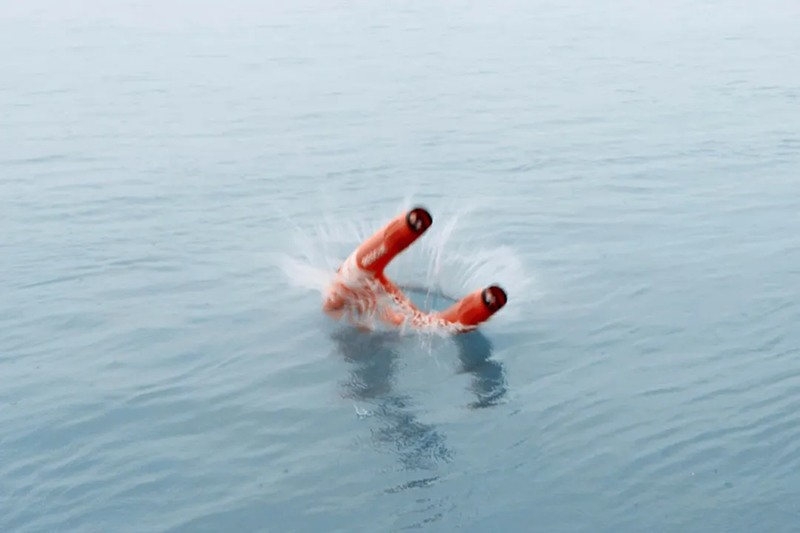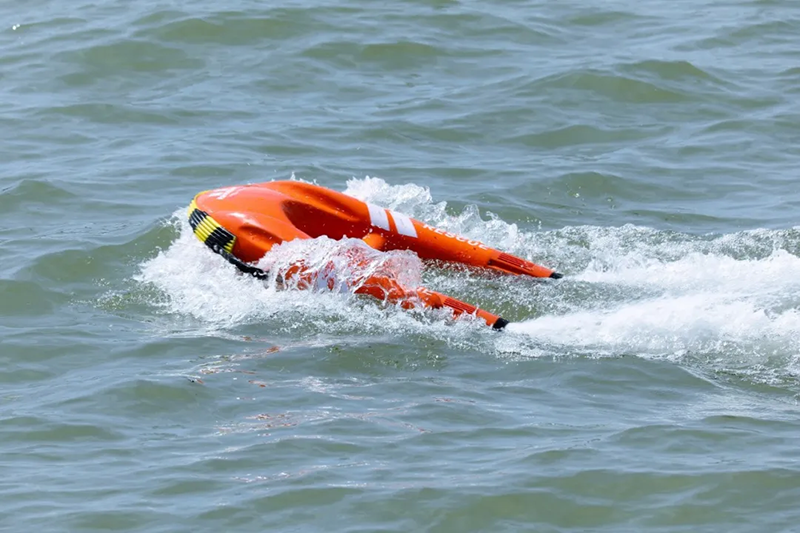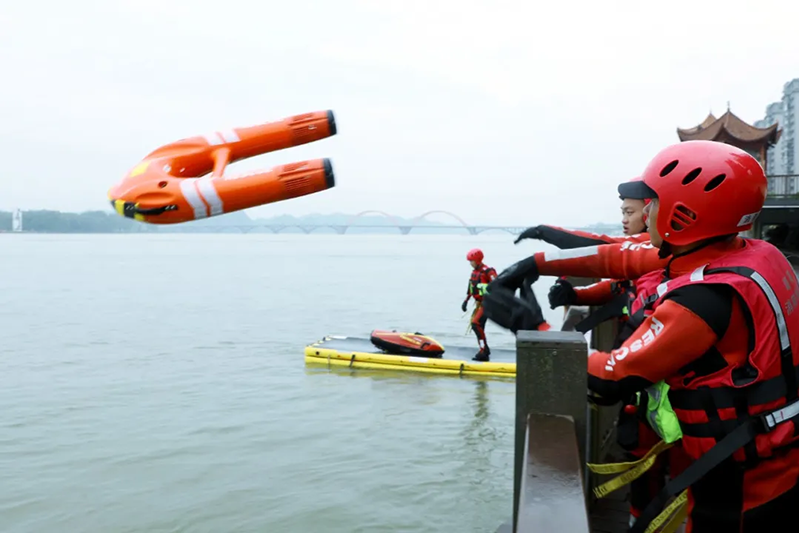On the morning of June 4, 2020, there was a joint exercise of military emergency forces in the waters near Shuangzhou Park, Taoyuan county, Changde, Hunan province. The exercise included 10 contents of water regime reconnaissance, surface search and rescue, transfer of people, rescue of out-of-control passenger ships, transfer of people, urban flood drainage, epidemic prevention, and control,unchoke roads, and battlefield agitation.
The Havospark water rescue robot made its debut in Changde and successfully participated in rescue operations, which amazed the audience. Some people called it "black technology" for water rescue.
The first round: remote control operation to save people
In the morning of the same day, the exercise simulated a person falling into the water near Shuangzhou Park. The situation was critical because the rubber lifeboat could not approach the victim. The firefighters immediately decided to use water rescue robots to rescue the trapped people.

In the twinkling of an eye, two firemen quickly threw the water rescue robot (water rescue flying wing) into the water.
The robot fell into the water, what would it do next? Read on!
After being launched into the water, the robot quickly turned on to work, sliding towards the trapped persons across the lake. It turns out that this is a robot that can be remotely controlled.
The robot quickly approached the person who fell into the water. This type of robot is small in size, light in weight, and strong in power. It does not need to be assembled at the rescue site and is directly put into use. It is suitable for saving people from rivers, seas, and lakes, and can play a greater role in places where lifeboats are difficult to reach.
Havospark Hover Ark H3 has an unloaded speed of 21 kilometers per hour, a manned speed of 7 kilometers per hour, an effective buoyancy of 40 kilograms, a towing force of 230 kilograms, and a remote rescue function. It is mainly suitable for the rescue of people falling into rivers, lakes, etc.



